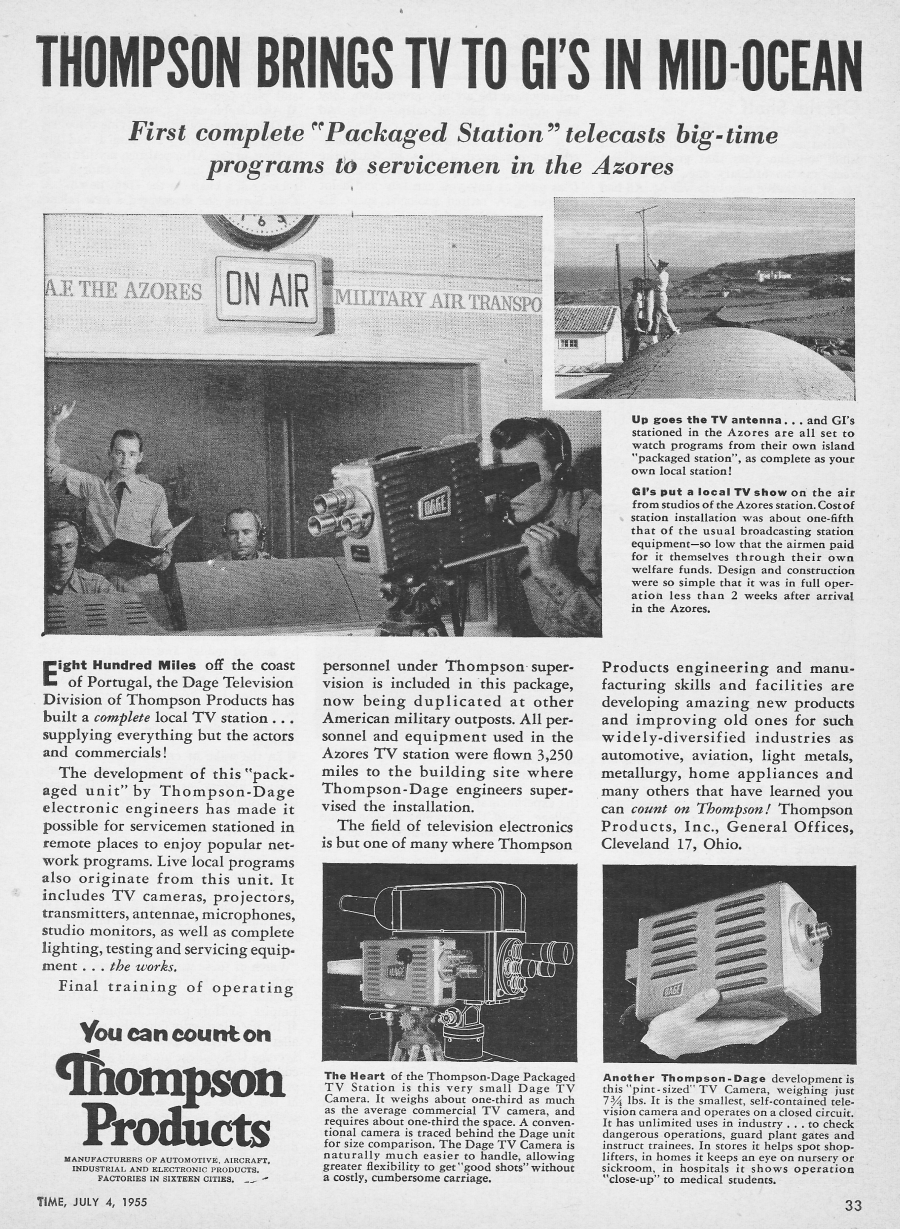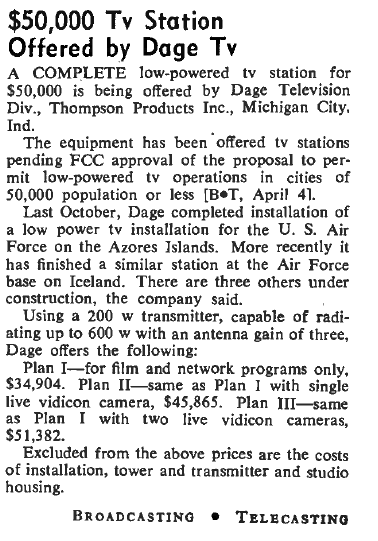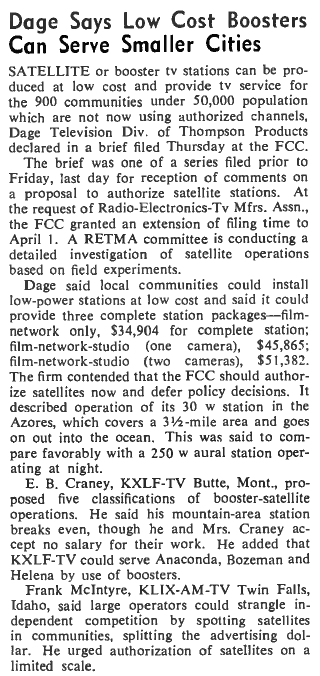|
Not sure there was a AFRTS connection on this or not... can anyone tell us? it was built from funds from ??? Up goes the TV antenna ••• and GI's Thompson
|
$50,000 Tv Station Offered by Dage Tv A COMPLETE low- powered tv station for $50,000 is being offered by Dage Television Div., Thompson Products Inc., Michigan City. Ind. The equipment has been offered tv stations pending FCC approval of the proposal to permit low -powered tv operations in cities of 50,000 population or less [BT, April 41. Last October, Dage completed installation of a low power tv installation for the U. S. Air Force on the Azores Islands. More recently it has finished a similar station at the Air Force base on Iceland. There are three others under construction, the company said. Using a 200 w transmitter, capable of radiating up to 600 w with an antenna gain of three, Dage offers the following: Plan I -for film and network programs only, $34,904. Plan II -same as Plan I with single live vidicon camera, $45,865. Plan III -same as Plan I with two live vidicon cameras, $51,382. Excluded from the above prices are the costs of installation, tower and transmitter and studio housing. BROADCASTING TELECASTING Page 104 April 11, 1955
|
Dage Says Low Cost Boosters Can Serve Smaller Cities SATELLITE or booster tv stations can be produced at low cost and provide tv service for the 900 communities under 50,000 population which are not now using authorized channels, Dage Television Div. of Thompson Products declared in a brief filed Thursday at the FCC. The brief was one of a series filed prior to Friday, last day for reception of comments on a proposal to authorize satellite stations. At the request of Radio -Electronics -Tv Mfrs. Assn., the FCC granted an extension of filing time to April 1. A RETMA committee is conducting a detailed investigation of satellite operations based on field experiments. Dage said local communities could install low -power stations at low cost and said it could provide three complete station packages -film network only, $34,904 for complete station; film- network- studio (one camera), $45,865; film- network- studio (two cameras), $51,382. The firm contended that the FCC should authorize satellites now and defer policy decisions. It described operation of its 30 w station in the Azores, which covers a 31/2-mile area and goes on out into the ocean. This was said to cormpare favorably with a 250 w aural station operating at night. E. B. Craney, KXLF -TV Butte, Mont., proposed five classifications of booster -satellite operations. He said his mountain -area station breaks even, though he and Mrs. Craney accept no salary for their work. He added that KXLF -TV could serve Anaconda, Bozeman and Helena by use of boosters. Frank McIntyre, KLIX -AM -TV Twin Falls, Idaho, said large operators could strangle independent competition by spotting satellites in communities, splitting the advertising dollar. He urged February 28, 1955 BROADCASTING TELECASTING
|



